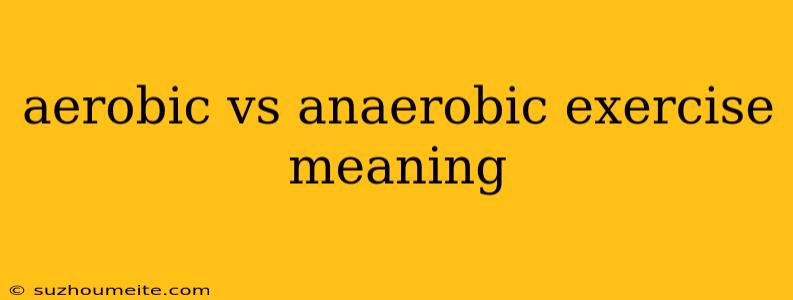Aerobic vs Anaerobic Exercise: Understanding the Difference
The terms "aerobic" and "anaerobic" are often used when discussing exercise, but what do they actually mean? Understanding the difference between these two types of exercise is crucial for maximizing your fitness goals and ensuring you're working out safely and effectively.
Aerobic Exercise: The "With Oxygen" Workout
Aerobic exercise, also known as cardio, is any activity that uses large muscle groups for a sustained period of time, increasing your heart rate and breathing. The "aerobic" part refers to the use of oxygen during the exercise.
Here are some characteristics of aerobic exercise:
- Uses oxygen: Your body uses oxygen to fuel the activity.
- Sustained effort: Exercises are performed for a longer duration, typically at a moderate intensity.
- Improves cardiovascular health: Regular aerobic exercise strengthens your heart and lungs, improving blood circulation.
- Examples: Running, swimming, cycling, dancing, brisk walking.
Anaerobic Exercise: The "Without Oxygen" Workout
Anaerobic exercise involves short bursts of intense activity that require your body to work harder than it can with oxygen alone. It utilizes stored energy sources in your muscles for fuel.
Here are some characteristics of anaerobic exercise:
- Limited oxygen: Your body doesn't use oxygen as the primary energy source.
- High intensity: Activities are performed at a high intensity for a short duration.
- Builds muscle mass: Anaerobic exercise helps increase muscle strength and size.
- Examples: Weightlifting, sprinting, interval training, HIIT workouts.
Benefits of Both Types of Exercise
Both aerobic and anaerobic exercise offer numerous health benefits, and incorporating both into your fitness routine is ideal for overall well-being:
Aerobic exercise benefits:
- Improved cardiovascular health
- Weight management
- Lower risk of chronic diseases
- Increased energy levels
- Improved mood
Anaerobic exercise benefits:
- Increased muscle mass and strength
- Improved bone density
- Enhanced metabolism
- Improved athletic performance
- Improved body composition
Finding the Right Balance
The optimal mix of aerobic and anaerobic exercise depends on your individual goals and fitness level.
- For overall health and fitness: A combination of both types of exercise is recommended.
- For weight loss: Focus on aerobic exercise, particularly activities that burn a significant number of calories.
- For building muscle: Prioritize anaerobic exercise, including strength training and HIIT workouts.
Remember to consult with a healthcare professional or certified personal trainer to determine the best workout plan for your needs. By understanding the difference between aerobic and anaerobic exercise, you can create a fitness regimen that helps you achieve your desired results while keeping your body healthy and strong.
